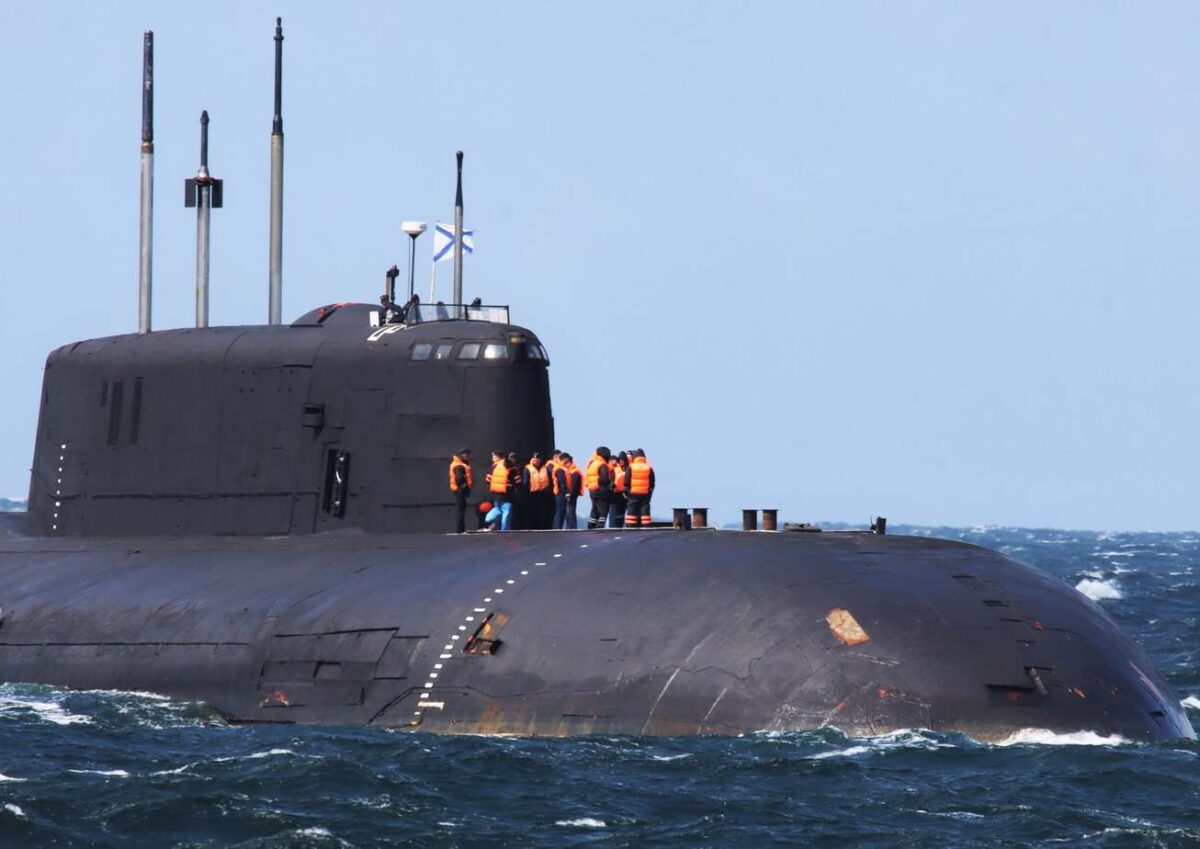Russia, known for over-stating military capabilities and trumpeting its supposed effects on the news and social media, has taken threats to a new level. A nuclear-powered and nuclear-tipped torpedo called the Poseidon is the latest weapon that has lit up the propaganda organs. Russian TV talking heads say the Poseidon could create a tidal wave that could destroy the British Isles to punish the United Kingdom for supporting Ukraine.
Tough Talk From News Anchor
In May, a conspiracy theorist commentator named Dmitry Kiselyov exhorted the value of the Poseidon on Russia’s Channel One, one of the state media outlets that tows the Kremlin’s party line. Kiselyov said the “strike by the country’s Poseidon nuclear underwater drone could drown the UK under a tidal wave of radioactive seawater,” according to Euro News.
Kiselyov continued the threatening words. “The explosion of this torpedo near the British coast will cause a giant tsunami wave up to 500 meters high. The wave would also carry extreme doses of radiation and after its passage over Great Britain leave a radioactive desert, unfit for anything for a long time.”
Something to Be Concerned About
The Poseidon, if accounts are true about its development from more mainline Western sources, is indeed fearsome. It would have seemingly unlimited range to detonate a two-megaton (equivalent to two million tons of TNT) nuclear device close to shore. It could threaten the densely-populated east coast of the United States by causing nuclear fall-out and maybe a “radioactive tsunami” as the Russian propaganda claims.
Treaty Violation? Russia Doesn’t Care
This underwater drone is not believed to be ready for deployment. However, the torpedo, if it is tested successfully and placed in a Russian submarine, would have a huge military advantage, and its capabilities lay outside current arms control treaties such as New START. No country could stop it. The strategic nuclear-powered combat drone could also target aircraft carrier battle groups and have the ability to eliminate several American warships with one launch.
Runs Fast and Deep
Believed to have a speed of 70 knots and a weight of 100 tons traveling at 3,300 feet, the nuclear torpedo would be difficult to counteract. It could swim under the protection of ice in the Arctic Ocean.
Belgorod Submarine May Deploy the Poseidon Someday
Russia’s Belgorod submarine is the likely candidate to launch the Poseidon. The Belgorod is one of the largest subs in the world – bigger than the American Ohio-class guided missile submarines. The Belgorod could someday have up to six Poseidons on board.
Putin’s Super Weapons Are a Breed Apart
The Poseidon is one of the super weapons that Vladimir Putin crows about. This collection includes the Avangard nuclear-tipped hypersonic glide vehicle and the Skyfall nuclear-powered and nuclear-armed cruise missile. Putin has no fear of violating New START.
Navy Brass Concur
The Pentagon has taken notice of these developments. U.S. Strategic Command commander Admiral Charles Richard told the Washington Times last year that the Poseidon, Avangard, and Skyfall “threaten to redefine Russia’s nuclear force with asymmetric strategic weapons capabilities never before fielded.”
How Could It Be Stopped?
The Poseidon doomsday weapon is 65 feet long and six feet wide – “the size of a school bus.” However, the U.S. Navy is likely looking at counter-measures to detect it – perhaps with submarine-launched drones that could use sonar to trace the nuclear torpedo. Manned anti-submarine aircraft could likely discover its path as well.
Currently, the Poseidon is being used for propaganda effect. But navy brass is concerned about the Belgorod and whether it could deploy the nuclear torpedo. It seems the navy could perform some type of computer simulation that could aid in the discovery of Poseidon to counteract it. Range is a problem. The Poseidon is expected to be able to engage targets at least 5,000 nautical miles away – giving it the ability to cover a significant amount of ocean. At least the Poseidon is on the Pentagon’s radar screen, and it will be up to the naval intelligence to keep tabs on its development.
Now serving as 1945’s Defense and National Security Editor, Brent M. Eastwood, PhD, is the author of Humans, Machines, and Data: Future Trends in Warfare. He is an Emerging Threats expert and former U.S. Army Infantry officer. You can follow him on Twitter @BMEastwood.

